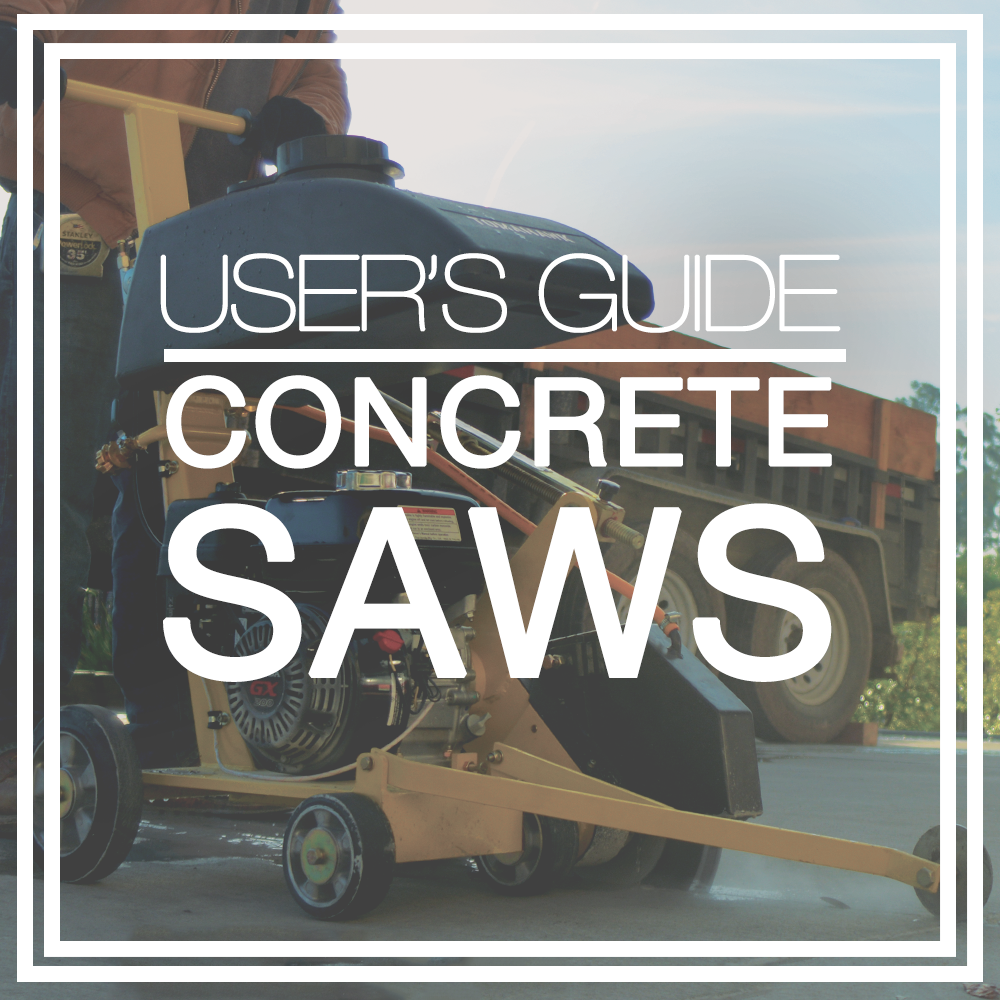When it comes to creating grooves and inlays into slabs of concrete, a cut off saw or walk-behind concrete saw is ideal. Concrete saws are very effective on heavy concrete and stamped concrete. These are ideal for trenching, patch repair, and concrete and asphalt applications. When using your saw first pick the correct blade necessary for your job. Choose whether you need an asphalt or concrete blade, diamond tipped, for a dry or wet cut.
To Install a Blade
-
Remove the blade cover
-
Remove the arbor cap
-
Slide the blade onto the arbor shaft
-
Re-attach the nut over the blade and re-attach blade cover
-
When installing the blade make sure to check for under-cutting, flatness, core fatigue, and segment damage on either the blade or arbor.
-
Make sure the water tank hose is properly connected
Before starting, also
-
Check that belt is properly tightened
-
Check that the bearings on the arbor shaft are properly greased
When starting the concrete saw
-
Start the engine
-
Open water valve to apply a wet cut
-
Adjust the blade slowly to the ground. The blade will slowly pull the device forward
-
Step cutting is necessary for cutting maximum depth
-
Slowly guide the saw once started on your cutting line with the cutting guide
-
Tomahawk Saws can cut a maximum depth of 4.5-5.5’’
There are serious consequences for not operating the saw properly
Concrete Saw Safety
Tomahawk always thrives to improve its products and make safety a key point. It’s important to follow all instructions inside the manual and fully understand how to use the machine before operating. Be sure everyone who uses has this understanding. Improper use of a walk-behind saw can result in serious or fatal injury. Never run the machine unattended
Safety Tips
-
Before starting a concrete saw make sure no children or animals are nearby.
-
Always use hearing and eye protection and consider a face shield for protection.
-
It is important to wear clothing that is well fitted and durable boots to prevent any blade entanglement.
-
When installing the blade make sure the blade arrow is pointing the correct direction.
-
Always use a wet blade for wet cuts and dry blade for dry cuts. Using the proper blade rated for the material you are cutting is extremely important. Not doing so can cause serious harm to the operator or even fatal injury.
-
Don’t try to twist or change direction when making a cut. Make smooth cuts, so as you do not break the blade.
-
Do not re-use a blade that was already used for a job. Use each blade for a job and then discard properly.
-
Become familiar with the material you are cutting, as dust and debris can become airborne when using a concrete saw. These materials could be hazardous which can cause birth defects, cancer, and repertory diseases. For this reason we recommend using a respirator.










